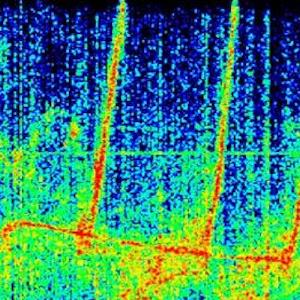Spanning almost three generations of music enthusiasts, DJ Goa Gil is an imposing cult figure in the world of psy-trance music. Released in 2007, Goa Gil's innate vision is clearly imprinted in the name of the album Worldbridger. He is the bridge between the physical, spiritual, sacred and the hallucinogenic, or so he claims to be. The album cover is decorated with motifs from sacred sites around the world and appropriated tribal iconography. The protagonist of this world-bridge, Gil is seated cross-legged upon a Mayan temple. As the album’s cover artwork confabulates the artist's ego, it is also perfect eye-candy for the post-modern hippy. There's much to uncover behind the formation of 'cyber-baba' - the 'techno-shaman' - Swami Mangalanand - A history parallel to that of modern Goa and it's bygone psychedelic era. The long winding trail over decades, of the Californian hippy morphing into a living 'god' of the psychedelic tribes, is truly panoramic. As Goa Gil turns 70 this year, this article is demystifying his cult status - exploring the inextricable links between the evolution of psy-trance culture, shamanic lifestyles, LSD and Goa.
From Cali to Kali
Early 1970's, fresh from San Francisco’s acid rock explosion, Gil came to Goa - with what intent we may never know. He immediately set out promulgating trance inducing dance 'rituals' and LSD to a naive and gullible bunch of followers - a majority of whom were young folks running away from the west, in a quest to find a better life or even divinity in the east. What they found is not important, yet the quest laid down a fresh path, for a nascent culture to take form. Initially the natives looked on in awe, yet willy nilly embracing the fervour and the music bit by bit. Dare we call it east-west fusion. Gil and his small cohort began experimenting, a new lifestyle invoking new visions of the future, in remote locations along coastal Goa, that would remain unknown for nearly two decades. The charismatic dreadlocks, exotic tattoos, tribal piercings of Gil embracing hindu religious practices, rituals and the demon goddess Kali, made him a symbol of curiosity, reverence and desire. Over time Gil's cult following grew, from the humble beach-shack parties using tape players, to acid-rock bands, to dusk-till-dawn raves mixed via minidiscs, to the big alters of dance as the 'godfather of dark-psy'. Somewhere early along that timeline Gil morphed into Goa Gil. Folks in Goa argue, if the seeds of psy were dispersed by design or by accident - at least two decades before it became a globally resonating culture. The backward evolution of the sacred locations like Anjuna, Arpora, Hill-Top, 'Mango Trees' etc is evident today - now dotted with garish resorts, air-conditioned shopping arcades and restaurants, walled mega-clubs and copy-cat beach shacks. After all, tourism consumed much of psy-trance and the spiritual naivety of the place and it's propagators. Watch the backward evolution of Goa in the 1999 indie documentary, titled 'The Last Hippie Standing'
A Case Of Techno-Spiritual Tourism?
Goa Gil is in essence an exponent of the ritual. One who promises a 'transition' via dance music and spirituality. In his book 'Goa Gil - The Kalifornian Exile' author Graham Saint John says "Gil clearly professes to adopt the trance dance assemblage as a revitalising tool ... For Goa Gil is not simply a DJ (and some will argue that he is not a “DJ” at all), but a religious specialist, an initiate of the Shaivite sect 'Juna Akhara', a cultural exile, and a spiritual activist." Mid 1990's in Goa, at the height of the Goa-Trance movement, one could not afford to miss a Goa Gil appearance - free-entry with a fair amount of communal LSD and Hashish to start with. Post 2000, as Goa became synonymous with electronic dance music and raves much like Ibiza and Miami did, the proliferation of tourism and big business was quick to capitalise the cheap real-estate, the friendly liberal Goans, and the music of the eager new ravers. Since early 1990s, the influx of European, American, Israeli and Russian tourists by the thousands plus millions of Indians, exponentially filled up the coastline of Goa. Was paradise overbooked and lost?
5000 People On Acid!
Dare we say that Goa Gil's music is not about artistic integrity, yet his spiritual projection and discourse is what makes him a pioneer figure, mesmerising the youth of the 80s, 90s and even the post-millennial psychedelic tribes. Similar is the case of maharishis and super-gurus like Osho, Sri Ravi Shankar, Sadguru Jaggi etc who have struck gold via their words and orations, instead of their actions. "I think that my concept can fit with every culture because it draws inspiration and direction from a time of humanity when, no matter where you went, people were in touch with the earth and the spirits of nature, the Sun and the Moon and all the elements. And so we’re delving to the same place and trying to bring the same thing forth but with the technology of the 21st century" says Gil in Lalith K. Rao’s (aka Alien Mental) track “Ritual” (Mind Hack, 2007). During the apex of the San Fransisco acid enlightenment era, Gil was deeply inspired by the likes of Otis Redding, Little Richard and Sun Ra. By the late 70's he was fronting acid-rock bands, in and around Anjuna which featured several native and foreign musicians. Lamentable that not one album was recorded, to document this short-lived endemic sound, even for the sake of posterity. By the mid 80s Gil had realised the power and burgeoning rise of electronic dance music in the western hemisphere. Though he remained clearly averse to early German techno and Detroit style acid-house, he gradually embraced EBM (electronic body music). His spiritual and shamanic personality was colluding with music made on machines and synthesizers. Yet again, like a super-catalyst LSD struck at the heart of this collusion. The transition was quick, in time and at the best place possible. By early 1990s, Gil was headlining many parties in north Goa, sometimes witness to "5000 people on acid" as Auckland-based DJ and documentary film-maker Ray Castle recalls.
Swami Dark-Psy!
Stardom and global affinity did not rob Gil's adherence to hindu spiritualism and yogic practices. In 2010 Gil became Swami Mangalanand Saraswati (Mangalanandji). Subsequently he was recognised as a sadhu at the Haridwar Kumbh Mela. He is the first foreigner to hold a seat at the Akhara Council, which oversees about 100,000 sadhus in India and outside. Gil claims that he alone, over 30 plus years has remained loyal to certain yogic tenets, which date back to Guru Dattatreya (circa 2000 BCE) Is Gil following a divine order or simply fulfilling his duty? The life of an artist-in-exile, a Californian rebel, whose anarcho-spiritual dissidence and stage performance is now sealed by his holy credentials. However divine his presence, Goa Gil's following and cult status has faded in reality and his temper may soar at any given moment. 2012, while DJing, Goa Gil is seen kicking a photographer trying to get close, to get a better shot (Holy Guns Party New Delhi). Gil remains unrelenting in his DJ sets. The barrage of white label dark matter drilling away well past dawn. The soaring synthy melodies typical to the old-Goa tradition are gone, where the Sun’s emergence used to signal a shift, from frenetic to softer slower burning arrangements. “It was a dark monotonous and moronic onslaught, the psychotic sound continued well past sunrise... was left wondering if I was listening to a loud diesel generator or the guru of Psy-trance...” says Alvin D'Silva, an independent party organiser based in Candolim, recalling a Goa Gil event in Vagator, celebrating Mahashivaratri (birthday of Shiva). Monotonous or moronic, Gil is perhaps the only DJ at age 69, who can pull off a 24-hour set (sitting upon some lotus) at the Sankara Festival in Switzerland last year. Goa Gil is literally a Psy-clopedia!
From Cali to Kali
Early 1970's, fresh from San Francisco’s acid rock explosion, Gil came to Goa - with what intent we may never know. He immediately set out promulgating trance inducing dance 'rituals' and LSD to a naive and gullible bunch of followers - a majority of whom were young folks running away from the west, in a quest to find a better life or even divinity in the east. What they found is not important, yet the quest laid down a fresh path, for a nascent culture to take form. Initially the natives looked on in awe, yet willy nilly embracing the fervour and the music bit by bit. Dare we call it east-west fusion. Gil and his small cohort began experimenting, a new lifestyle invoking new visions of the future, in remote locations along coastal Goa, that would remain unknown for nearly two decades. The charismatic dreadlocks, exotic tattoos, tribal piercings of Gil embracing hindu religious practices, rituals and the demon goddess Kali, made him a symbol of curiosity, reverence and desire. Over time Gil's cult following grew, from the humble beach-shack parties using tape players, to acid-rock bands, to dusk-till-dawn raves mixed via minidiscs, to the big alters of dance as the 'godfather of dark-psy'. Somewhere early along that timeline Gil morphed into Goa Gil. Folks in Goa argue, if the seeds of psy were dispersed by design or by accident - at least two decades before it became a globally resonating culture. The backward evolution of the sacred locations like Anjuna, Arpora, Hill-Top, 'Mango Trees' etc is evident today - now dotted with garish resorts, air-conditioned shopping arcades and restaurants, walled mega-clubs and copy-cat beach shacks. After all, tourism consumed much of psy-trance and the spiritual naivety of the place and it's propagators. Watch the backward evolution of Goa in the 1999 indie documentary, titled 'The Last Hippie Standing'
A Case Of Techno-Spiritual Tourism?
Goa Gil is in essence an exponent of the ritual. One who promises a 'transition' via dance music and spirituality. In his book 'Goa Gil - The Kalifornian Exile' author Graham Saint John says "Gil clearly professes to adopt the trance dance assemblage as a revitalising tool ... For Goa Gil is not simply a DJ (and some will argue that he is not a “DJ” at all), but a religious specialist, an initiate of the Shaivite sect 'Juna Akhara', a cultural exile, and a spiritual activist." Mid 1990's in Goa, at the height of the Goa-Trance movement, one could not afford to miss a Goa Gil appearance - free-entry with a fair amount of communal LSD and Hashish to start with. Post 2000, as Goa became synonymous with electronic dance music and raves much like Ibiza and Miami did, the proliferation of tourism and big business was quick to capitalise the cheap real-estate, the friendly liberal Goans, and the music of the eager new ravers. Since early 1990s, the influx of European, American, Israeli and Russian tourists by the thousands plus millions of Indians, exponentially filled up the coastline of Goa. Was paradise overbooked and lost?
Over time, many of these spiritually bent visitors, jaded by the brutal nature of big cities, became partial or permanent residents along the coastal provinces of north Goa. The place would never be the same, and the visions of peace, love, unity and utopia would be sequestered by cheap flights, fast-food, luxury apartments and 'very high' weekends. By 2008, Gil's techno-spiritual utopia was usurped by the likes of Sunburn Festival and countless other 'boiled-egg raves'. Gil and his band of followers (numbering thousands) would relocate deeper into the hinterland of Goa, eventually spilling over into new sacred locations around the world - to reassemble and regenerate newer forms of psy-trance, namely dark-psy, fullon, psybient and hitech. The aesthetics of this new techno-spiritualist sound was rapidly standardised, much like most other genres of electronic dance music. The initial morphing animalistic nature of psy-trance had been overrun by a drill mentality. A hard quantised kick (going but-but-but-but), the inane rubbery baseline and tons of passing dramatic atonal effects and lets not forget the intermittent robotised voice saying "you are the centre of your universe... unleash the mahashakti" or some balderdash like that. Psy DJs booming chillums in front of the audience was already a passé.
5000 People On Acid!
Dare we say that Goa Gil's music is not about artistic integrity, yet his spiritual projection and discourse is what makes him a pioneer figure, mesmerising the youth of the 80s, 90s and even the post-millennial psychedelic tribes. Similar is the case of maharishis and super-gurus like Osho, Sri Ravi Shankar, Sadguru Jaggi etc who have struck gold via their words and orations, instead of their actions. "I think that my concept can fit with every culture because it draws inspiration and direction from a time of humanity when, no matter where you went, people were in touch with the earth and the spirits of nature, the Sun and the Moon and all the elements. And so we’re delving to the same place and trying to bring the same thing forth but with the technology of the 21st century" says Gil in Lalith K. Rao’s (aka Alien Mental) track “Ritual” (Mind Hack, 2007). During the apex of the San Fransisco acid enlightenment era, Gil was deeply inspired by the likes of Otis Redding, Little Richard and Sun Ra. By the late 70's he was fronting acid-rock bands, in and around Anjuna which featured several native and foreign musicians. Lamentable that not one album was recorded, to document this short-lived endemic sound, even for the sake of posterity. By the mid 80s Gil had realised the power and burgeoning rise of electronic dance music in the western hemisphere. Though he remained clearly averse to early German techno and Detroit style acid-house, he gradually embraced EBM (electronic body music). His spiritual and shamanic personality was colluding with music made on machines and synthesizers. Yet again, like a super-catalyst LSD struck at the heart of this collusion. The transition was quick, in time and at the best place possible. By early 1990s, Gil was headlining many parties in north Goa, sometimes witness to "5000 people on acid" as Auckland-based DJ and documentary film-maker Ray Castle recalls.
One can arguably claim that Goa Gil created the bedrock of a proto-culture, eventually upon which many producers and DJ's found success and following. By 1999 Goa had become a favoured destination for hundreds of DJs from Europe, America and Russia. At Gil's events (Hilltop 1999), it was a common sight of 'devotees' setting up altars in front of the dance floor, which grew over the course of the event with dancers smudging sage and placing candles, incense, flowers and pictures of hindu gods and goddesses. For a while, Gil was the sole guardian of the holy trinity - of trance, dance and acid. From Goa to Portugal to Russia to Chile to Israel, Gil was eponymous with psy! The rest is history...
Swami Dark-Psy!
Stardom and global affinity did not rob Gil's adherence to hindu spiritualism and yogic practices. In 2010 Gil became Swami Mangalanand Saraswati (Mangalanandji). Subsequently he was recognised as a sadhu at the Haridwar Kumbh Mela. He is the first foreigner to hold a seat at the Akhara Council, which oversees about 100,000 sadhus in India and outside. Gil claims that he alone, over 30 plus years has remained loyal to certain yogic tenets, which date back to Guru Dattatreya (circa 2000 BCE) Is Gil following a divine order or simply fulfilling his duty? The life of an artist-in-exile, a Californian rebel, whose anarcho-spiritual dissidence and stage performance is now sealed by his holy credentials. However divine his presence, Goa Gil's following and cult status has faded in reality and his temper may soar at any given moment. 2012, while DJing, Goa Gil is seen kicking a photographer trying to get close, to get a better shot (Holy Guns Party New Delhi). Gil remains unrelenting in his DJ sets. The barrage of white label dark matter drilling away well past dawn. The soaring synthy melodies typical to the old-Goa tradition are gone, where the Sun’s emergence used to signal a shift, from frenetic to softer slower burning arrangements. “It was a dark monotonous and moronic onslaught, the psychotic sound continued well past sunrise... was left wondering if I was listening to a loud diesel generator or the guru of Psy-trance...” says Alvin D'Silva, an independent party organiser based in Candolim, recalling a Goa Gil event in Vagator, celebrating Mahashivaratri (birthday of Shiva). Monotonous or moronic, Gil is perhaps the only DJ at age 69, who can pull off a 24-hour set (sitting upon some lotus) at the Sankara Festival in Switzerland last year. Goa Gil is literally a Psy-clopedia!
Loved as an iconic figure of the Goa vibe, shrouded in myth and hearsay and even loathed as a symbol of contradictions, today Goa Gil pitches like an old pirate ship caught in a typhoon. Even as the global wave of psy-trance crashed around 2010, Gil remained loyal to the sound and the lifestyle. Yet Gil, who turns 70 this year, stands over 40 years since he first set foot on Anjuna beach. Seldom does he live in Goa today and visibly the place is not what it used to be, at the turn of the century. The question of whether Goa Gil is venerable or reproachable may never be settled - for that is the case with anomalies. For there is only one real Swami of dark-psy!
































0 -